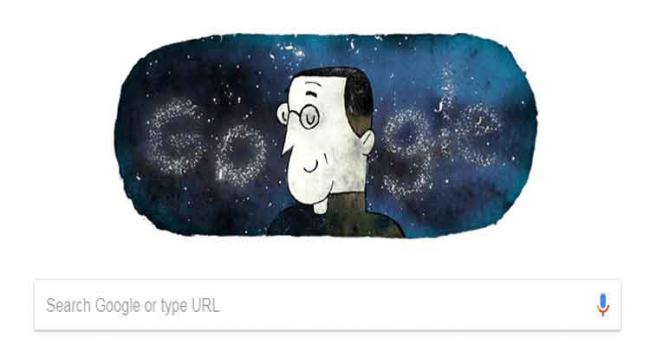Google Doodle Honours Georges Lemaitre’s Big Bang Theory

New Delhi: Google on Tuesday dedicated an animated Doodle to Belgian cosmologist Georges Lemaitre who in 1927 propounded the Big Bang theory when he theorised that the universe began as a single point and expanded to become as big as it is now.
Lemaitre's thesis was based on calculations derived from Albert Einstein's Theory of General Relativity, but Einstein was initially not impressed with Lemaitre's work.
"Your calculations are correct, but your physics is atrocious," Einstein said, two years before changing his mind.
For his contribution to enhancing the understanding of the universe, Lemaitre received in 1934 the prestigious Francqui prize, the highest scientific accolade in Belgium -- and one of his nominators was Einstein.
The Google Doodle on Tuesday that marks Lemaitre's 124th birth anniversary depicts the cosmologist within the constantly expanding universe that he first envisioned, surrounded by galaxies expanding outward just as he said they would.
Born on July 17, 1894 in the Belgian city of Charleroi, Lemaitre wore many hats in his lifetime. He served the Belgian Army during World War I. He entered a seminary after the war and was ordained a Catholic priest in 1923. He studied physics at the University of Cambridge, Harvard University and the Massachusetts Institute of Technology (MIT).
Lemaitre's 1927 paper theorising that the universe was expanding was soon substantiated by Edwin Hubble's observations, which were published in 1929.
Lemaitre accurately estimated the numerical value that astronomers would come to call the Hubble constant, a unit of measurement that describes the universe's rate of expansion.
Compared to Lemaitre's small scientific readership in Belgium, Hubble's work received much wider circulation.
As a result Hubble's name is more often associated with the Big Bang, which birthed a whole new branch of science known as relativistic cosmology, Google said in a statement.
Still Lemaitre was not completely overlooked in his day. Besides the Francqui prize in 1934, he received several other international scientific awards, and a crater on the moon was named for him in 1970. He died on June 20, 1966. (IANS)




